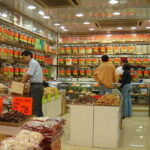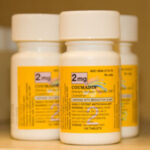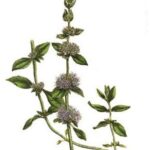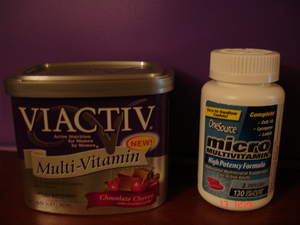Clinical abortion methods can be traumatizing or prohibitively expensive for the women who choose to use them. Because of this–and a common perception that they are simply “unnatural” some women opt to attempt home abortions using natural herbs, such as pennyroyal, tansy, parsley, black cohosh, and dong quai.
As an herbalist and active member of many alternative circles, I have seen a tragic number of women find themselves injured, sickened, or deeply traumatized by herbal abortions. Herbal abortions (and all other forms of home abortion) are not a safe or effective alternative to clinical methods.
All the following methods of inducing herbal abortion are either dangerous or ineffective to varying degrees. This guide is NOT intended to give information about how to use these options: it is to inform women of the many, serious risks so that they are encouraged to seek other alternatives.
Pennyroyal
The most well-known herbal abortificant, pennyroyal is also one of the most dangerous. Pennyroyal contains pulegone, a powerful uterine stimulant that causes strong contractions in the uterus. Because this herbal abortion method uses pulegone, it is one of the most effective methods–however, pulegone is also extremely toxic, even in relatively small amounts.
While there have been only a few reported deaths from pennyroyal, it is extremely likely that more deaths have occurred than have been recorded in print. I have personally spoken with several women who had serious complications after consuming pennyroyal tea, including ruptured ectopic pregnancies, shock, acute liver damage, bloody diarrhea, incomplete abortion, and hemorrhage.
Pennyroyal oil is even more toxic than the leaf, which itself is quite volatile. Both the oil and the leaf should especially be avoided by women who have, or might have, an ectopic (tubal) pregnancy. This herbal abortion method can and will cause a rupture of fallopian tubes if used in these cases– a medical emergency that causes death without immediate medical attention.
Tansy
So toxic that mere skin contact will cause rashes in most people, tansy is as dangerous as pennyroyal when taken internally. The volatile oil found in tansy, thujone, breaks down in the digestive tract and is likely to cause liver failure, serious digestive problems, or kidney failure.
Fortunately for the health of women everywhere, tansy’s toxic effects are now very well known among herbalists and pro-choice groups. Because of this, tansy’s use as an herbal abortion method is now obsolete. I have never met any woman who has used tansy to stimulate an herbal abortion, and I am glad to know that more women are aware of its risks.
Tansy has other medicinal uses, including its ability to eliminate intestinal parasites. However, because it is toxic even in very low doses, most herbalists now refrain from recommending it for any purpose.
Parsley
This extremely common culinary herb is one of the safest methods of inducing an herbal abortion, and it is also the least effective. I have at times recommended it to my clients as a method of bringing on a late period when the delay is not caused by pregnancy. Women who have very irregular cycles can sometimes use parsley as a pessary (vaginal suppository) to make their cycles more predictable.
However, parsley’s ability to stimulate uterine contractions is very weak compared to some of the more dangerous herbs. After implantation has occurred (usually a few days before a missed period) a blastocyst is generally too strongly rooted into the womb to be expelled using an herb as weak as parsley.
Parsley’s ability to safely stimulate contractions may, however, be useful as a form of emergency contraception. I have known a few women who have stated that drinking parsley tea for several days following intercourse may prevent conception or implantation. While this use may be slightly effective, it is supported only by anecdotal evidence and should not be relied on exclusively as a form of birth control.
Also called squaw vine, black cohosh is a wonderful root long used by midwives as a means of ending pregnancy that has gone past term. I strongly encourage the use of black cohosh as a treatment for a variety of common female problems–see my article about Black Cohosh and Childbirth for more information–however, I do not believe that it is a safe herbal abortion method.
Herbal abortions with black cohosh are at a very high risk of causing hemorrhage. Black cohosh is known to interfere with blood clotting, which is usually a relatively harmless side-effect when it occurs following labor, since medical staff or midwives are equipped to handle the complications. However, since herbal abortions are not medically supervised, potentially lethal hemorrhage is a very serious and frightening reality.
I have personally used black cohosh as a treatment for menstrual cramps (not as an abortificant) and have found that it prolongs my periods by four or five days. And while it led to a very easy childbirth experience for me, it also may have been responsible for the prolonged bleeding I experienced in the postpartum months. Because of my own experiences, I would strongly advise against its use to stimulate herbal abortions, since acute hemorrhage can be fatal.
If you are considering an abortion using any of these methods, contact your local health department or crisis pregnancy center to find out about safer, more effective alternatives to herbal abortion. Whether you choose to carry your pregnancy to term or seek a clinical abortion, these options will be safer than the potentially deadly effects of herbal abortion methods.
Sources:
National Institutes of Health. Workshop on the Safety and Use of Black Cohosh in Clinical Studies ; Thuja occidentalis (Arbor vitae): A Review of its Pharmaceutical, Pharmacological and Clinical Properties. Evidence Based Complementary and Alternative Medicine. 2005 Mar;2(1):69-78; “Pennyroyal Toxicity: Measurement of Toxic Metabolite Levels in Two Cases and Review of the Literature”. Annals of Internal Medicine 124 (8): 726-734





